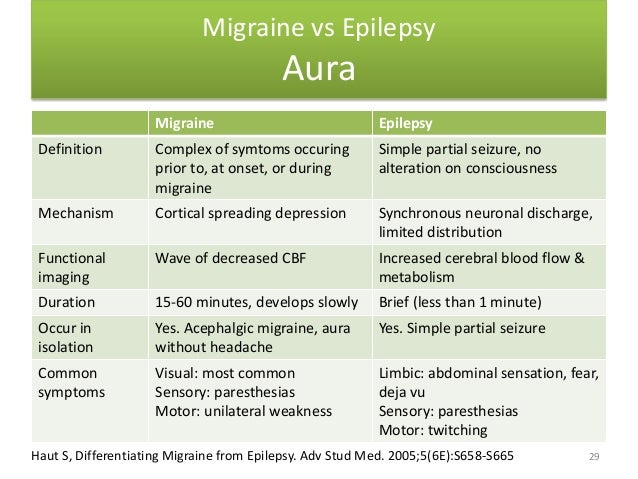

feel numbness or tingling on their body.feel sensitive to light, sound, and/or odors.

They tend to change depending on the phase of the migraine.

Many different things can trigger a migraine attack. However, most people who have migraine do not have any of these conditions.

The most common type of aura is a visual aura. The location of the wave of activity in the brain determines the type of aura. the migraine.Share on Pinterest AnnaStills/Getty Images Migraine aura is a wave of activity in the brain traveling through the brain. After one hour at the latest, these symptoms are followed by a headache, i.e.There are “positive” symptoms such as seeing zigzag lines, a tingling sensation or colours in the vision.If there are several symptoms, they occur successively, meaning one after the other. Clinical studies suggest a different pathophysiological role for sex hormones in migraine with aura (MA) and without aura (MO).The symptoms occur slowly and develop progressively over 15 to 30 minutes.These points are more indicative of a migraine aura: The symptoms are not accompanied by a headache, nor are they followed within an hour by a headache. Migraine with brainstem aura (MBA), previously called basilar-type migraine, is an uncommon form of migraine with aura characterized by brainstem symptoms such as dysarthria, vertigo, or ataxia, without evidence of motor weakness.Most patients found intranasal ketamine effective and continued to use it despite these adverse events. In the last few weeks it became more frequent and also starts to happen in the other eye. Conclusion In this descriptive study, intranasal ketamine served as an acute treatment for refractory chronic migraine by reducing headache intensity and improving quality of life with relatively tolerable adverse events. There are no “positive” symptoms such as zigzag lines, tingling or colour vision. Can visual aura alone be migraine I'm 21 years old girl, and for the last six years, about once a week, when I wake up from night sleep all I see in my left eye is a very bright light. All symptoms are deficits such as the loss of vision, numbness or paralysis.Several symptoms occur at the same time.All of the symptoms occur within less than a minute with maximum intensity, rather than spreading gradually.If you are suffering from at least two of the following points, it is likely you are having a stroke: Whether you suspect you are having a stroke or unusual aura-like symptoms, call the emergency services right away, because the time it takes to get treatment can determine the extent of the harm you suffer via damage to your brain cells. The problem is that “with only one episode, it is difficult to know,” says Dr Göbel, and only a doctor will be able to make a diagnosis.įor a reliable diagnosis, the patient must have at least two episodes that meet certain specific criteria. Misdiagnosing a TIA as a migraine with aura can lead to more serious damage from an avoidable stroke, which is why it helps to be able to tell the difference. Too often are early stroke symptoms misinterpreted as the signs of a pending migraine – a mistake that can be very harmful, according to Dr Hartmut Göbel, who practises at a pain hospital in the German city of Kiel. It can be hard to tell the difference between an aura, which is a visual disturbance common with migraines, and a form of stroke known as a transient ischaemic attack (TIA).


 0 kommentar(er)
0 kommentar(er)
